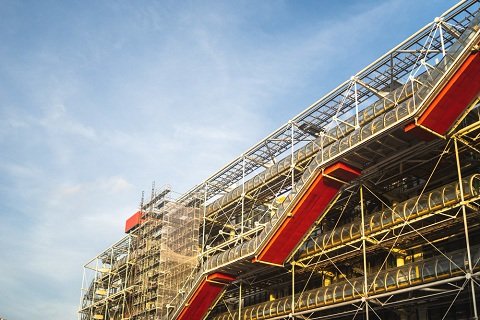In the realms of both construction and education, the concept of scaffolding stands as a testament to the importance of providing support and structure during the formative stages of any endeavor. Whether erecting a physical edifice or nurturing the growth of knowledge and skill, scaffolding serves as the foundational framework upon which success is built. In this article, we delve into the essence of scaffolding, exploring its origins, evolution, and application in diverse contexts.
History of Scaffolding:
The origins of scaffolding trace back to ancient civilizations, where rudimentary forms of scaffolds were used to construct monumental structures such as the pyramids of Egypt and the great walls of China. Ancient Greek and Roman civilizations employed wooden scaffolds to build temples, amphitheaters, and aqueducts, showcasing early advancements in construction techniques.
The Middle Ages saw the emergence of more sophisticated scaffolding systems, with wooden platforms supported by poles and ropes. These structures facilitated the construction of cathedrals, castles, and other architectural marvels during the medieval period.
The Industrial Revolution marked a significant shift in scaffolding materials and techniques, with the advent of iron and steel structures replacing traditional wooden frameworks. The introduction of standardized components and advanced engineering principles revolutionized scaffolding, paving the way for modern systems capable of supporting heavy loads and accommodating complex architectural designs.
Today, scaffolding remains an indispensable tool in construction, renovation, and maintenance projects worldwide, reflecting centuries of innovation and refinement in its design and application.
Definition of Scaffolding:
Scaffolding is a temporary structure or framework erected on construction sites to support workers, materials, and equipment during building, repair, or maintenance activities. It typically consists of a network of interconnected tubes, boards, and other components that provide access to elevated work areas, such as building facades or ceilings. Scaffolding serves as a safe and stable platform for construction workers to perform tasks at heights, ensuring efficiency, productivity, and safety on the job site. Additionally, in an educational context, scaffolding refers to a teaching method that provides structured support and guidance to learners as they acquire new knowledge and skills, gradually fading as learners develop independence and proficiency.
Why is Scaffolding Necessary?
The necessity of scaffolding stems from the inherent risks and challenges associated with construction activities performed at heights or in precarious conditions. Here are several reasons why scaffolding is indispensable:
- Safety: Scaffolding provides a secure working platform for construction workers, reducing the risk of falls and other accidents. By offering stable footing and guardrails, scaffolding enhances safety standards on construction sites, mitigating potential hazards and injuries.
- Access: Scaffolding facilitates access to various areas of a building or structure that may otherwise be inaccessible or difficult to reach. It enables workers to perform tasks such as painting, plastering, bricklaying, and window installation at elevated heights with ease and efficiency.
- Efficiency: With scaffolding in place, construction workers can work more efficiently and productively, as they have convenient access to different levels and sections of the project site. This efficiency helps expedite construction timelines and reduces overall project costs.
- Support for Materials: Scaffolding not only supports workers but also provides a stable platform for materials, tools, and equipment needed for construction tasks. By eliminating the need to carry heavy loads up ladders or stairs, scaffolding streamlines workflow and minimizes physical strain on workers.
- Versatility: Scaffolding systems are highly versatile and adaptable to various types of construction projects, including high-rise buildings, bridges, tunnels, and industrial facilities. They can be customized to fit the specific requirements of each project, making them indispensable in diverse construction environments.
In summary, scaffolding is essential in construction due to its pivotal role in ensuring safety, providing access, enhancing efficiency, supporting materials, and offering versatility. Without scaffolding, the execution of construction tasks at elevated heights or in challenging conditions would be significantly more hazardous, time-consuming, and impractical.
Types of Scaffolding:
Scaffolding systems vary in design, configuration, and materials, tailored to suit specific project requirements and site conditions. Some common types of scaffolding include:
1. Tube and Coupler Scaffolding:
- Utilizes steel tubes interconnected with couplers to form a sturdy framework.
- Highly versatile and suitable for a wide range of construction projects.
- Provides excellent flexibility and stability, making it a preferred choice for complex structures and challenging environments.
2. Frame Scaffolding:
- Comprises prefabricated frames and cross braces assembled to create a modular scaffold.
- Ideal for low to medium-rise construction projects and maintenance tasks.
- Offers ease of assembly, disassembly, and transportation, enhancing job site efficiency.
3. Suspended Scaffolding:
- Suspended from overhead structures or support systems, allowing workers to access vertical surfaces.
- Commonly used for facade maintenance, painting, and window cleaning on high-rise buildings.
- Requires specialized rigging and safety measures to ensure stability and worker safety at elevated heights.
4. Mobile Scaffolding:
- Features wheels or casters for mobility, enabling easy repositioning within a worksite.
- Well-suited for projects requiring frequent relocation of scaffolding platforms.
- Offers convenience and versatility, enhancing productivity and workflow efficiency.
5. Cantilever Scaffolding:
- Extends horizontally from a supported structure, providing access to areas without ground support.
- Ideal for construction projects adjacent to roads, water bodies, or restricted spaces.
- Requires careful engineering and structural analysis to ensure stability and load-bearing capacity.
6. System Scaffolding:
- Consists of prefabricated components such as frames, braces, and connectors designed for rapid assembly.
- Offers high strength, versatility, and compatibility with various construction applications.
- Well-suited for projects requiring standardized scaffolding solutions and efficient deployment.
Components of Scaffolding:
A typical scaffolding system comprises several essential components designed to provide structural support, stability, and safety for workers. These components include:
- Standards: Vertical tubes or uprights that form the main load-bearing structure of the scaffold.
- Ledgers: Horizontal tubes that connect the standards and provide lateral support to the scaffold.
- Transoms: Horizontal members that support the scaffold boards or platforms.
- Scaffold Boards: Wooden or metal planks that serve as the working platform for workers and materials.
- Braces: Diagonal or cross braces that reinforce the scaffold structure and prevent swaying.
- Base Plates: Steel plates placed under the scaffold standards to distribute loads and provide stability.
- Couplers: Clamps or fittings used to connect scaffold tubes and secure them in place.
- Guardrails: Barriers installed along the edges of the scaffold platforms to prevent falls and accidents.
- Toeboards: Horizontal barriers attached to the scaffold platforms to prevent tools and materials from falling.
- Access Ladders: Vertical or inclined ladders providing safe access to scaffold platforms at different heights.
Safety Measures for Scaffolding:
Safety is paramount when working with scaffolding to prevent accidents, injuries, and fatalities. Implementing the following safety measures is essential to ensure the well-being of workers and the integrity of the scaffold structure:
- Qualified Personnel: Only trained and authorized personnel should erect, dismantle, or work on scaffolding structures.
- Regular Inspections: Conduct thorough inspections of scaffolding components before each use to identify any damage or defects.
- Proper Assembly: Follow manufacturer’s guidelines and industry standards when erecting scaffolding to ensure stability and load-bearing capacity.
- Fall Protection: Install guardrails, toeboards, and personal fall arrest systems to prevent falls from scaffold platforms.
- Stable Foundation: Ensure scaffolding is erected on stable and level ground, using base plates or mudsills to distribute loads evenly.
- Secure Anchorage: Anchor suspended scaffolds securely to overhead structures or support systems capable of withstanding anticipated loads.
- Weather Awareness: Monitor weather conditions and take appropriate precautions, such as securing scaffolding during high winds or inclement weather.
- Clear Communication: Establish clear communication channels and safety protocols among workers to prevent accidents and coordinate tasks effectively.
- Training and Education: Provide comprehensive training on scaffolding safety procedures, hazard recognition, and emergency response protocols.
- Regular Maintenance: Inspect and maintain scaffolding components regularly to ensure structural integrity and performance over time.
Adhering to these safety measures is crucial for mitigating risks and creating a safe working environment for construction workers and personnel involved in scaffolding operations.
Benefits of Using Scaffolding:
Scaffolding offers numerous benefits to construction projects, enhancing efficiency, safety, and productivity. Some key advantages of using scaffolding include:
- Height Access: Provides safe and convenient access to elevated work areas, enabling workers to perform tasks efficiently.
- Versatility: Accommodates various construction applications, including painting, plastering, welding, and facade maintenance.
- Improved Safety: Reduces the risk of falls, accidents, and injuries by providing stable platforms, guardrails, and fall protection systems.
- Enhanced Productivity: Facilitates faster completion of tasks by minimizing the need for constant repositioning and manual handling of materials.
- Increased Reach: Allows workers to reach inaccessible areas, corners, and vertical surfaces, improving accessibility and workflow efficiency.
- Structural Support: Supports heavy loads, equipment, and materials required for construction and maintenance activities, ensuring stability and safety.
- Cost-Effectiveness: Offers a cost-effective solution compared to alternative access methods, such as cranes or aerial lifts, for accessing elevated work areas.
- Adaptability: Can be customized and configured to suit specific project requirements, site conditions, and architectural designs.
- Time Savings: Reduces assembly and disassembly times, enabling rapid deployment and repositioning of scaffolding as project needs evolve.
- Regulatory Compliance: Helps meet regulatory requirements and industry standards for workplace safety, minimizing liability and legal risks for contractors and employers.
By leveraging these benefits, scaffolding plays a vital role in streamlining construction processes, improving worker safety, and ensuring project success across diverse industries and applications.
Future Prospects and Innovations:
The future of scaffolding is marked by ongoing technological advancements, innovations in materials, and improvements in safety standards. Emerging trends in scaffolding include:
- Advanced Materials: Continued research and development efforts are focused on exploring lightweight and durable materials for scaffolding components, enhancing portability, and structural integrity.
- Digital Solutions: Integration of digital technologies such as Building Information Modeling (BIM) and augmented reality (AR) enables more accurate planning, visualization, and monitoring of scaffolding installations, optimizing efficiency and safety.
- Modular Systems: The adoption of modular scaffolding systems allows for greater customization, scalability, and ease of assembly, catering to the evolving needs of construction projects and site conditions.
- Robotics and Automation: Robotics and automation technologies are being explored for tasks such as scaffold assembly, inspection, and maintenance, reducing reliance on manual labor and enhancing productivity.
- Smart Safety Systems: Implementation of sensor-based safety systems and real-time monitoring devices helps detect potential hazards, track worker movements, and ensure compliance with safety protocols, minimizing risks and improving overall safety performance.
As scaffolding continues to evolve in response to technological advancements and industry demands, its role in construction and maintenance projects will remain indispensable, driving innovation, efficiency, and safety across the built environment.
Conclusion:
Scaffolding serves as a fundamental component of construction and maintenance projects, providing essential support, access, and safety for workers at elevated heights. From its humble origins in ancient civilizations to modern-day innovations, scaffolding has evolved into a versatile and indispensable tool for the construction industry. By understanding its history, types, components, safety measures, benefits, and future prospects, stakeholders can harness the full potential of scaffolding to enhance efficiency, productivity, and safety in construction projects worldwide. As technology advances and industry standards evolve, scaffolding will continue to play a pivotal role in shaping the built environment and enabling progress in infrastructure development and urban construction.
References:
- Occupational Safety and Health Administration (OSHA). (2020). Scaffolding. Retrieved from https://www.osha.gov/scaffolding
- Construction Industry Scaffolders Record Scheme (CISRS). (n.d.). About Scaffolding. Retrieved from https://cisrs.org.uk/scaffolding-awareness-training/
- Health and Safety Executive (HSE). (2020). Working at height. Retrieved from https://www.hse.gov.uk/construction/safetytopics/scaffoldinginfo.htm






